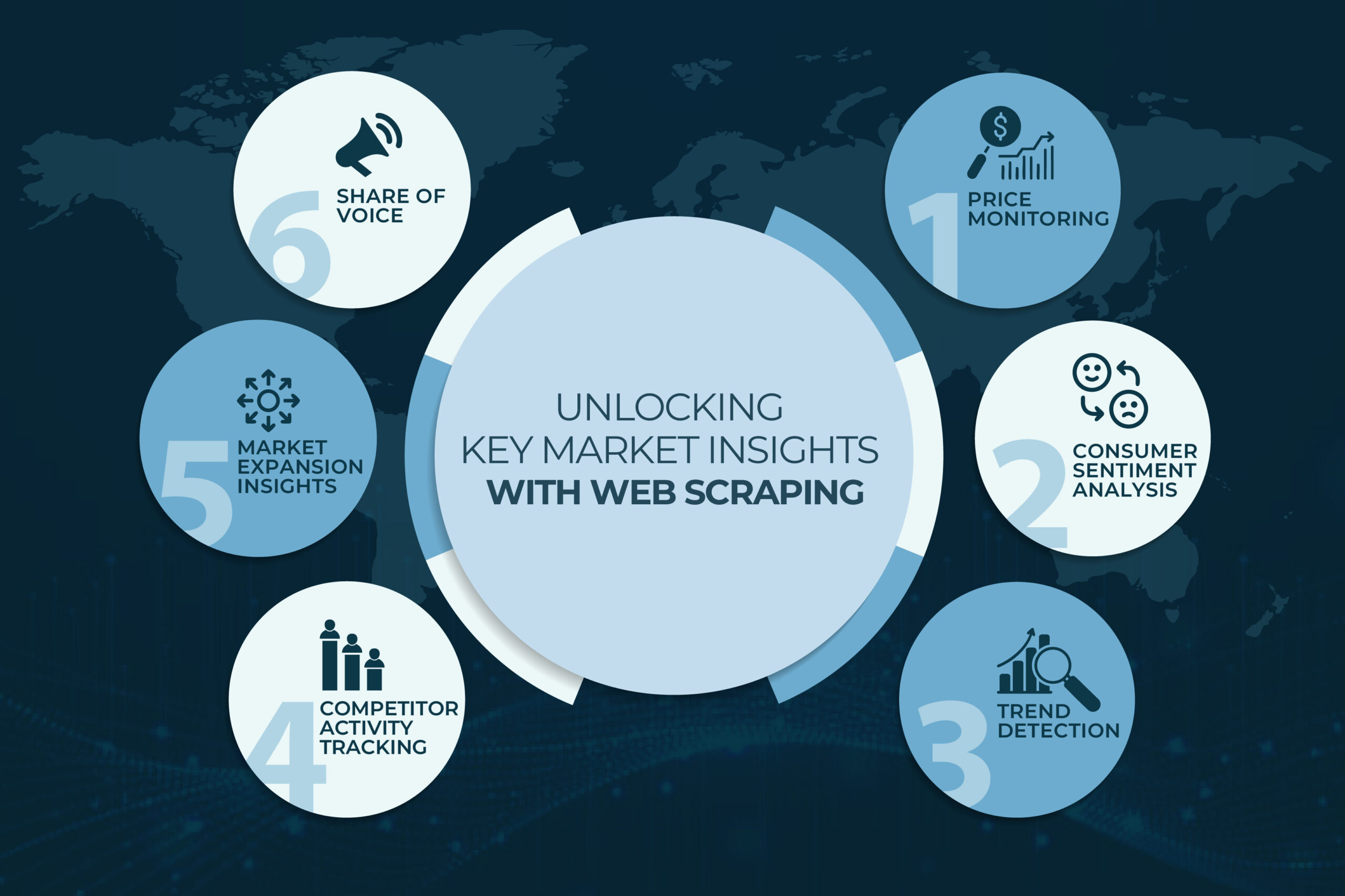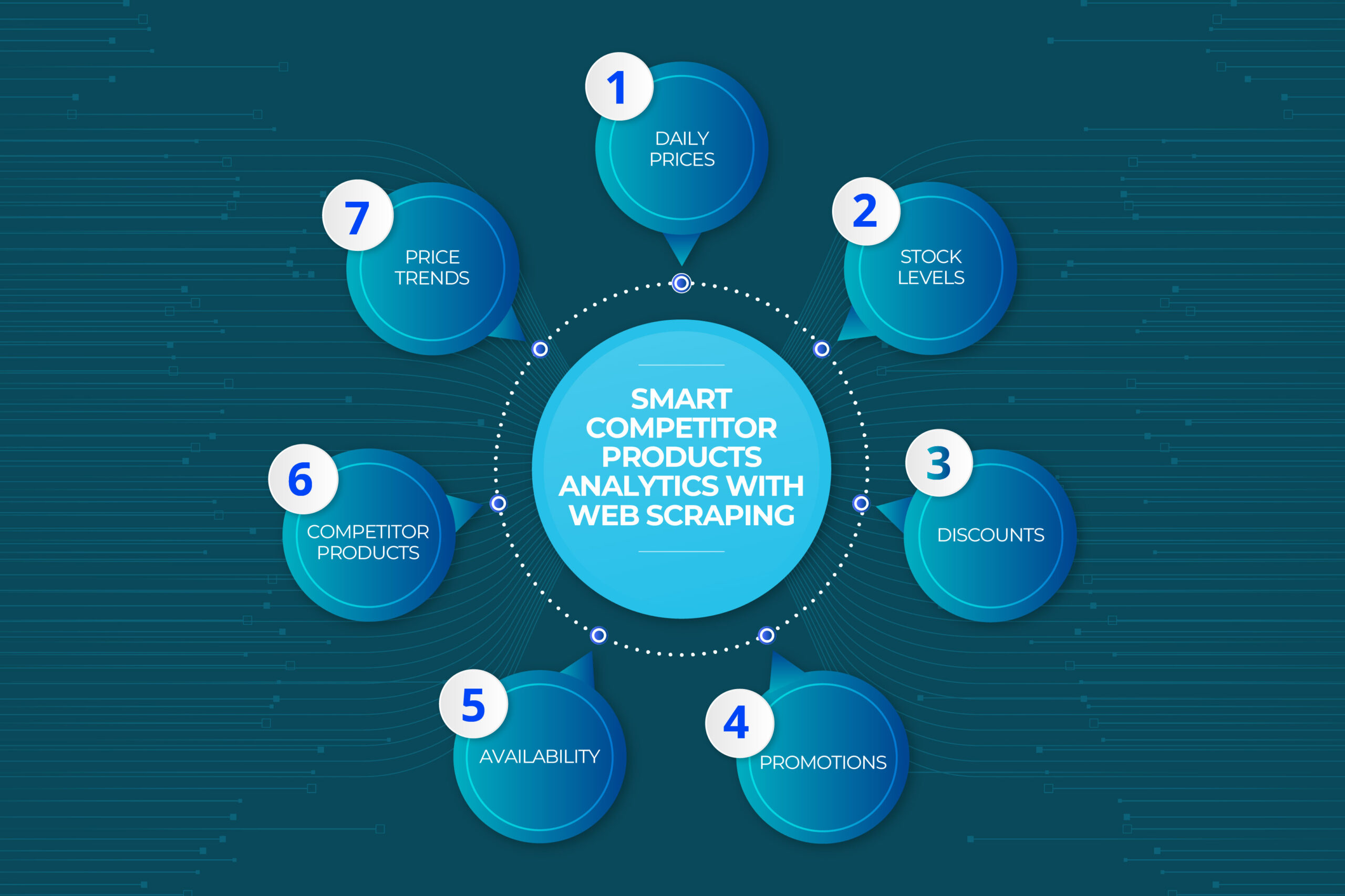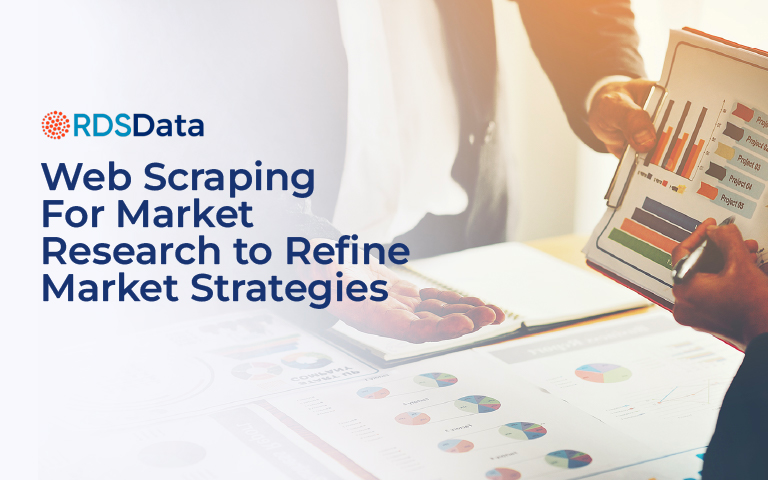Making informed decisions in today’s business environment requires far more than instinct or past experience. Markets shift quickly, competitors release new products faster than ever, and customer sentiment changes in real time. Relying only on surveys, reports, or traditional research methods is no longer enough.
According to a McKinsey report, organizations leveraging customer analytics are 23 times more likely to acquire new customers compared to competitors, and 9 times more likely to maintain customer loyalty.
This is where web scraping for market research plays a critical role. By extracting data from websites at scale, businesses gain access to various emerging opportunities. Unlike static reports, scraped data gives real-time, continuously monitored, and actionable insights.
In this guide, we’ll explore what is web scraping, why market leaders rely on it, its core applications, the challenges of doing research without automation, and best practices for enterprise-level data collection.
What is Web Scraping in the Context of Market Research?

At its core, web scraping is the process of using crawlers or bots to scrape data automatically from online sources. Instead of manually copying information, a scraper can extract millions of rows of structured data from:
- E-commerce sites for price monitoring
- Review platforms for consumer sentiment
- Social media for brand perception
- Marketplaces for product trends
- News portals for industry signals
For market research, this capability transforms how organizations gather and analyze information. Traditional approaches like focus groups or third-party surveys give a limited amount of data, often outdated by the time reports are delivered. Web scraping instead provides real-time visibility, ensuring managers can continuously monitor competitors and consumers.
In short, scraping enables data-driven market research where decisions are backed by fresh, comprehensive, and actionable insights.
Why Market Leaders Are Turning to Web Scraping
There are several reasons enterprises are investing heavily in web scraping tools and custom pipelines for data collection:
- Real-time insights: Markets shift daily. Scraping keeps strategy aligned with live data.
- Scalability: Instead of small samples, companies can track millions of data points.
- Competitive edge: Gaining visibility into competitor actions helps in staying ahead.
- Cost-efficiency: Automated scraping reduces dependency on expensive market research agencies.
- Customization: Scraping pipelines can be tailored to focus on specific markets, competitors, or products.
A Deloitte report on external data use found that nearly half of companies already use external data in their analytics activities, while 92% of analytics professionals said their organizations need to increase the use of external data sources for decision-making.
Without web scraping, scaling this kind of integration is almost impossible.
Key Applications of Web Scraping for Market Strategy Refinement
Scraping is not about collecting data for the sake of it. The real power lies in turning raw data into valuable insights that refine marketing strategy and support informed decisions. Below are the most common enterprise applications:
1. Competitor Pricing & Product Monitoring

Price is one of the strongest levers in market positioning. In retail and e-commerce, even a 2% price difference can shift consumer behavior significantly.
Web scraping allows organizations to:
- Monitor competitor price changes daily.
- Track product availability and stock levels.
- Benchmark discounts and promotions.
For example, according to Boston Consulting Group (BCG), retailers that adopt AI-powered pricing and dynamic pricing models have achieved a 5–10% increase in gross profit, along with higher revenue and improved customer value perception. So, by scraping pricing data, businesses not only react but also predict pricing shifts, enabling smarter adjustments.
2. Consumer Sentiment & Behavior Tracking
Understanding customer voice has always been at the heart of strategy. But with billions of opinions shared online, manual tracking is impossible.
Web scraping enables enterprises to:
- Collect reviews from platforms like Trustpilot, Yelp, and Amazon.
- Monitor social media sentiment at scale.
- Analyze product ratings across regions.
Harvard Business Review reports that acquiring a new customer is anywhere from 5 to 25 times more expensive than retaining an existing one. Web scraping helps businesses strengthen retention by uncovering what customers actually say in reviews, from delivery delays to product quality and competitor comparisons.
3. Trend Spotting & Demand Forecasting
Markets are dynamic. What is popular today may decline tomorrow. Extracting data from websites allows businesses to spot early signals of rising or falling demand.
Examples include:
- Tracking keyword popularity on e-commerce sites.
- Analyzing trending categories on marketplaces.
- Monitoring new product launches across industries.
According to McKinsey & Company, retailers using AI-driven demand forecasting in supply chain management can reduce forecasting errors by 20–50% compared to traditional methods. Those enterprises using these insights align inventory, production, and campaigns far ahead of competitors.
4. Market Entry & Expansion Research
Before entering a new region, leadership must evaluate consumer demand, competitor density, and local pricing behavior.
Web scraping supports this by:
- Mapping local competitors’ offerings.
- Gathering consumer feedback across languages.
- Analyzing pricing differences between regions.
5. Brand Positioning & Share of Voice Analysis
In competitive industries, visibility matters as much as pricing. By scraping:
- Mentions across forums, blogs, and media can be tracked.
- Share of voice comparisons with competitors can be calculated.
- Brand perception shifts can be measured over time.
6. Partnership & Vendor Evaluation
Selecting the right partners or suppliers requires more than financials. Scraping enables enterprises to:
- Track supplier reviews.
- Benchmark vendor performance.
- Monitor distributor availability.
This supports risk management and ensures partnerships are built on real-time intelligence rather than outdated profiles.
Challenges of Market Research Without Automated Data Collection
Without scraping, businesses face:
- High costs of manual surveys and reports.
- Outdated insights, reports lag behind market shifts.
- Limited scope, small sample sizes misrepresent reality.
- Operational inefficiencies in monitoring competitors.
Best Practices in Enterprise Web Scraping for Market Research
For enterprises, scraping is not just about technology but about governance and strategy. Best practices include:
- Data Accuracy: ensure scrapers capture clean, structured, and verified datasets.
- Compliance & Ethics: align data extraction with legal frameworks.
- Automation Pipelines: use schedulers and distributed crawlers for scalability.
- Integration with BI Tools: feed scraped data into dashboards for leadership use.
- Continuous Monitoring: track competitors and markets regularly, not occasionally.
These practices convert scraping from a technical task into a strategic business asset.
The Strategic Impact of Web Scraping on Business Decisions
When implemented correctly, web scraping drives measurable outcomes:
- Faster decisions in boardrooms.
- Higher ROI from marketing campaigns.
- Reduced risks in new market entries.
- Optimized pricing strategies based on live competitor moves.
A Bain study found that enterprises using data-driven strategy refinement saw 15–20% improvement in operational efficiency within two years.
Future of Market Research with Advanced Data Extraction
The future combines scraping with AI, machine learning, and predictive analytics. This enables:
- Automated anomaly detection in competitor moves.
- Predictive demand forecasting with real-time signals.
- Smarter campaign optimization across channels.
Outsourcing Web Scraping to RDS Data
Building and maintaining enterprise-grade scraping infrastructure in-house is often costly, complex, and time-consuming. This is where outsourcing to a trusted data partner becomes a strategic advantage.
At RDS Data, we help enterprises transform raw online information into actionable intelligence by offering:
- Scalability – managed crawlers capable of handling millions of requests without interruptions
- Compliance – fully aligned with ethical and legal frameworks, reducing risks for your business.
- Customization – tailored solutions designed for your industry and market needs.
- Efficiency – empowering leadership teams to focus on insights and decision-making, while we manage the data pipelines.
Partner with us to ensure you always have the data foundation needed to make confident, informed decisions.
Key Takeaways
- Web scraping for market research is no longer optional — it is essential.
- It provides real-time, data-driven insights into pricing, sentiment, trends, and competitors.
- Market leaders who adopt scraping gain a competitive edge in decision-making.
- Outsourcing offers scalability and compliance at an enterprise level.
- Future strategies will rely heavily on AI-integrated scraping pipelines.
FAQs
Tired of broken scrapers and messy data?
Let us handle the complexity while you focus on insights.

